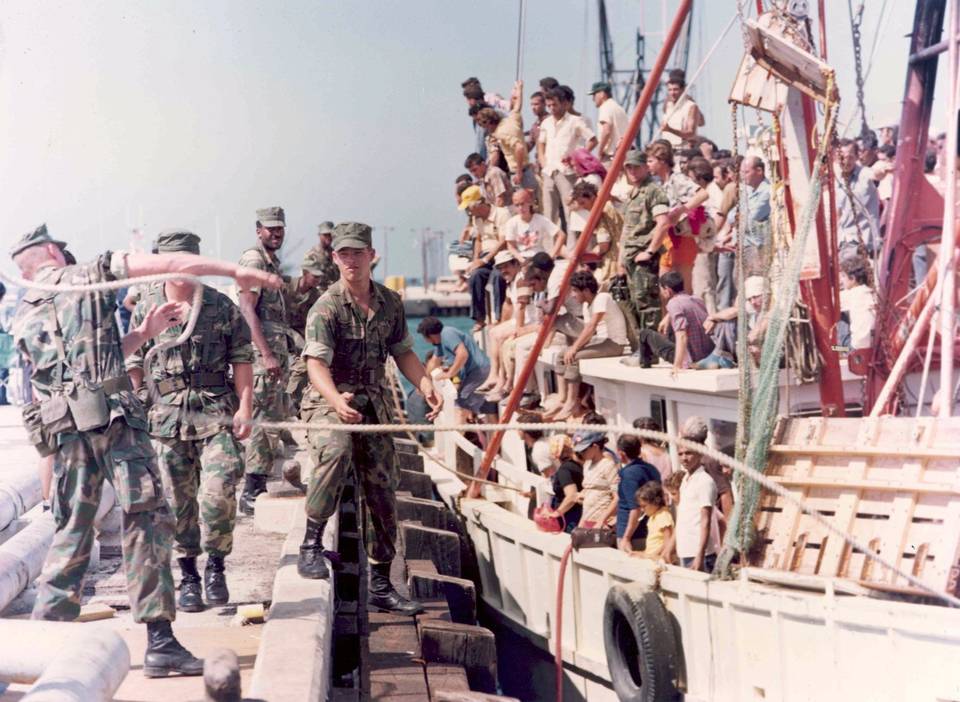
The Mariel Boatlift: How a 1980 Exodus Shaped Modern Miami
Share
When you think of Miami today—vibrant, diverse, and distinctly Latin—you're witnessing the legacy of a massive historical event that unfolded in just a few short months in 1980: the Mariel Boatlift. If you've ever strolled through Little Havana, heard the distinct Cuban-Spanish lilt in passing conversations, or seen T-shirts celebrating Cuban heritage sold along Calle Ocho, you’re brushing up against the ripple effects of this historic migration.
In this article, we’ll explore what the Mariel Boatlift was, why it happened, how it changed Miami forever, and why it's still relevant more than four decades later.
What Was the Mariel Boatlift?
In short, the Mariel Boatlift was a mass emigration of Cubans to the United States between April and October of 1980. Over 125,000 Cubans left from the Port of Mariel in Cuba and made their way across the Florida Straits to South Florida, particularly Miami.
The exodus began after a small group of Cubans seeking asylum crashed a bus through the gates of the Peruvian Embassy in Havana. When the Cuban government unexpectedly stopped guarding the embassy, thousands of Cubans rushed inside, demanding the chance to leave the country.
Cuban President Fidel Castro declared that anyone who wanted to leave Cuba could do so freely from the Port of Mariel. Suddenly, the floodgates opened. Many Cuban-Americans in Florida rushed to help their relatives, chartering boats to rescue them. What started as a family-driven evacuation turned into one of the largest mass migrations in the history of the Western Hemisphere.
The Numbers Behind the Boatlift
To understand the magnitude of the Mariel Boatlift, here’s a breakdown of the figures:
| Category | Number |
|---|---|
| Total emigrants from Cuba | ~125,000 |
| Duration | April 15 – October 31, 1980 |
| Boats involved | ~1,700 |
| U.S. cities primarily impacted | Miami, Key West |
| Detainees with criminal records | ~2,700–3,000 (estimated) |
While the majority were ordinary Cuban citizens—students, families, professionals—about 2–3% were former prisoners or individuals from psychiatric institutions, a fact that would later stoke controversy in the U.S.
The Political Backdrop: Why It Happened
To understand the Mariel Boatlift, you need to look at the tense relationship between the United States and Cuba at the time. Since the Cuban Revolution in 1959, Cuba had become a communist state under Fidel Castro. The U.S. had cut off diplomatic ties and imposed an economic embargo.
By 1980, economic conditions in Cuba were deteriorating, and public dissatisfaction was growing. The embassy incident gave Castro an unexpected opportunity: allow discontented Cubans to leave while also embarrassing the U.S. by including individuals with criminal or psychiatric backgrounds.
Meanwhile, U.S. President Jimmy Carter, emphasizing America's role as a humanitarian refuge, initially welcomed the Marielitos (as the emigrants became known) with open arms. But as the numbers increased and media coverage focused on the subset of arrivals with criminal records, public opinion shifted quickly.
How Miami Changed Forever
Before 1980, Miami already had a large Cuban community—many having arrived during the earlier 1960s exodus after Castro's rise. But the Mariel Boatlift reshaped Miami demographically, culturally, and economically in ways no one could have fully anticipated.
Cultural Impact
The influx of Marielitos brought new expressions of Cuban culture to Miami. The Spanish language gained even more prominence, and entire neighborhoods evolved with Cuban cafés, markets, music, and art. These cultural changes are part of what makes Miami the vibrant, multicultural city it is today.
Economic Shifts
At first, the arrival of so many people caused stress on Miami's job market and public services. But over time, many Marielitos integrated into the workforce, becoming business owners, tradespeople, and skilled professionals. Despite early fears, long-term studies have shown that the boatlift had minimal negative impact on wages or unemployment rates in Miami.
Political Ramifications
The Mariel Boatlift became a political lightning rod. Jimmy Carter’s handling of the crisis was heavily criticized and is often cited as a factor in his loss to Ronald Reagan later that year. In South Florida, the event intensified discussions around immigration policy and border control—debates that still echo in American politics today.
The Stigma and Redemption of the “Marielito” Label
Early media portrayals of the Marielitos often focused disproportionately on the small percentage who had criminal backgrounds, creating a stigma that persisted for years. For a time, "Marielito" became synonymous with criminality in popular culture, bolstered by films like Scarface (1983), where Al Pacino’s character Tony Montana arrives in Miami via the boatlift.
But that stereotype overlooked the majority—hard-working families who were simply seeking freedom and opportunity. Many Marielitos went on to lead successful, respectable lives in the U.S., and the community gradually fought back against the stigma with pride and resilience.
A Lasting Legacy
Today, Miami is impossible to imagine without its deep Cuban roots. Whether you’re sipping Cuban coffee in Hialeah or wearing a retro Miami T-shirt that nods to 1980s street style, you’re engaging with a culture that the Mariel Boatlift helped solidify.
Even local fashion trends reflect the blend of resilience and nostalgia tied to the era. Our Florida T-shirts, especially those inspired by Miami’s Cuban-American spirit, often carry echoes of that pivotal moment in history—bright colors, bold fonts, and slogans that tell a story.
Why It Still Matters
The Mariel Boatlift is more than a history lesson—it’s a case study in how immigration, politics, and culture collide. It raises important questions about who gets to migrate, how countries respond to humanitarian crises, and what it means to become part of a new homeland.
As today’s immigration debates continue across the U.S., the legacy of the Mariel Boatlift reminds us that behind every migration statistic is a human story—of courage, sacrifice, and hope.
Final Thoughts
Whether you're a Florida native, a history buff, or just someone who loves good storytelling, the Mariel Boatlift is an essential chapter in Miami’s—and America’s—story. It’s a tale of boats and borders, family reunions and political fallout, of finding freedom in a place just 90 miles away.
And if you're wearing a Florida T-shirt while reading this, just know: you're wearing a piece of history.
